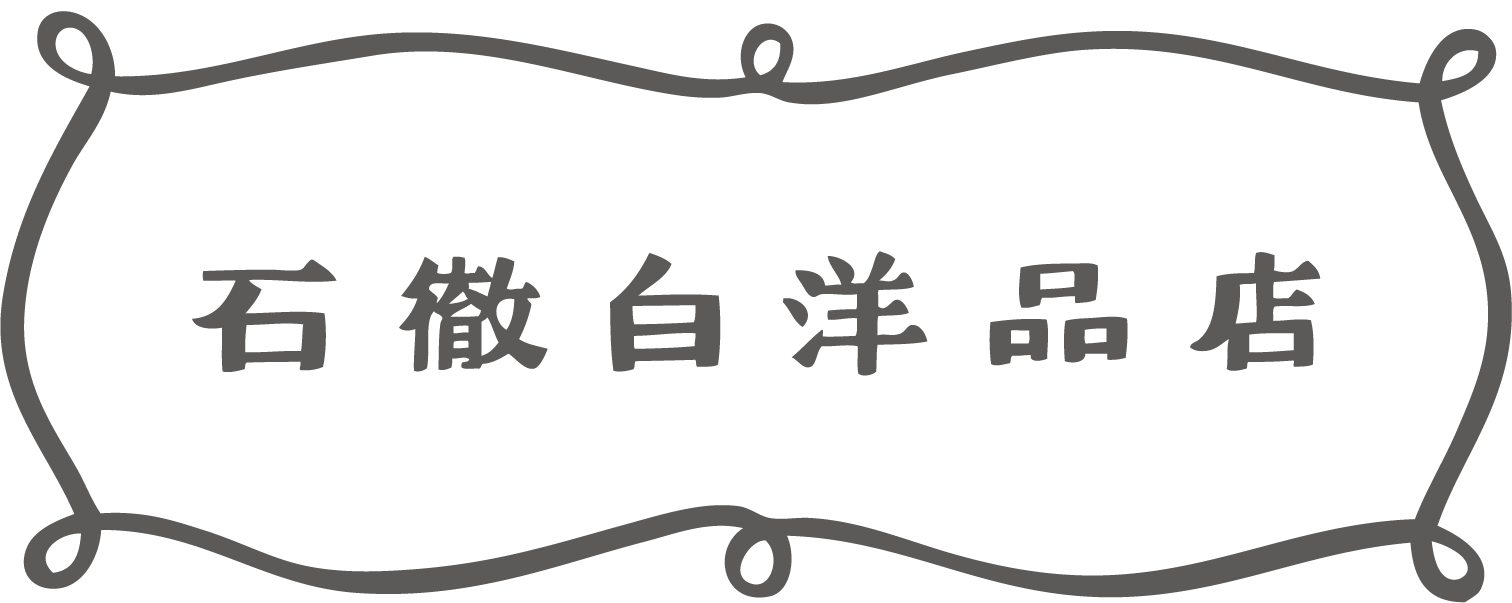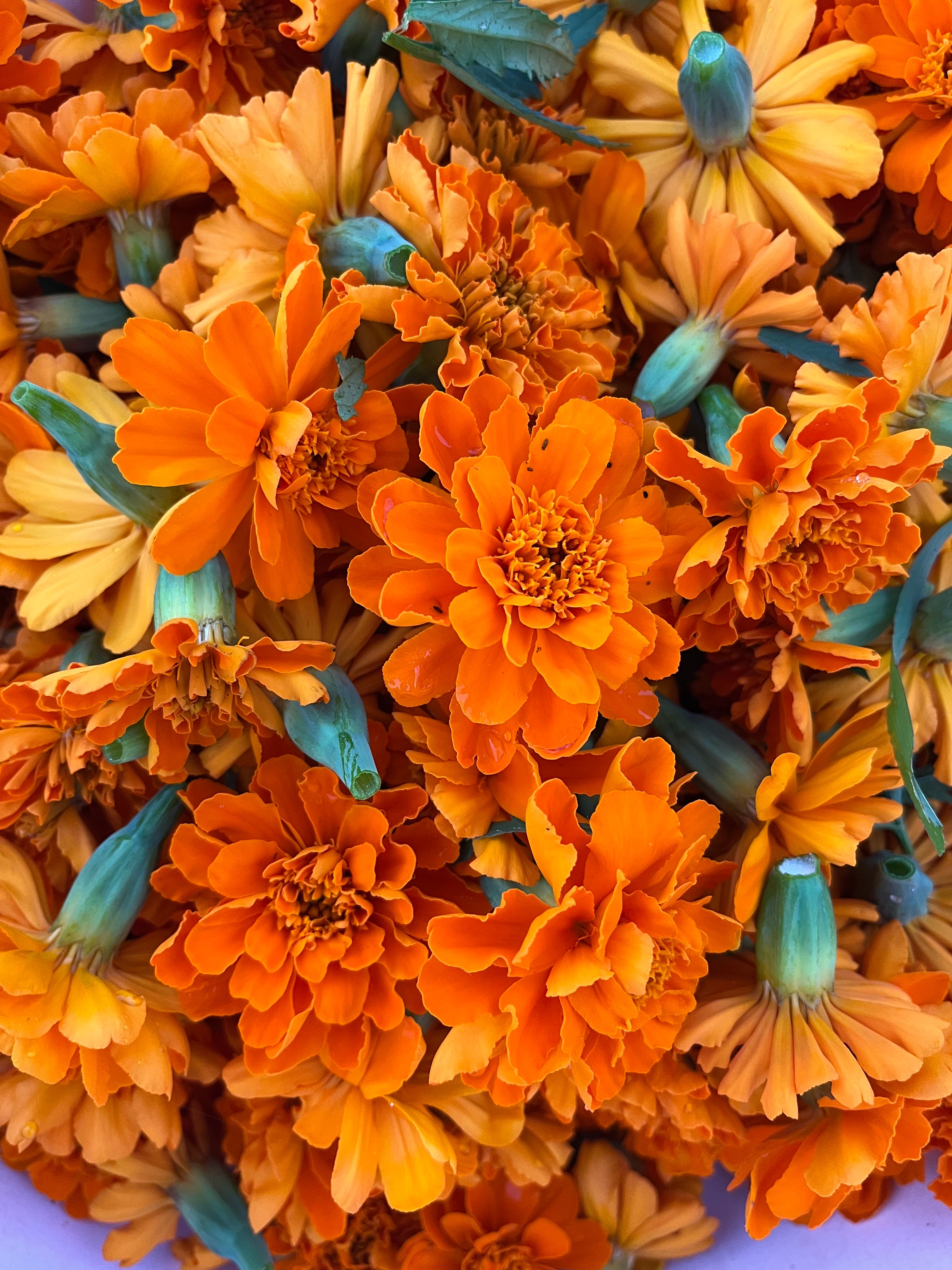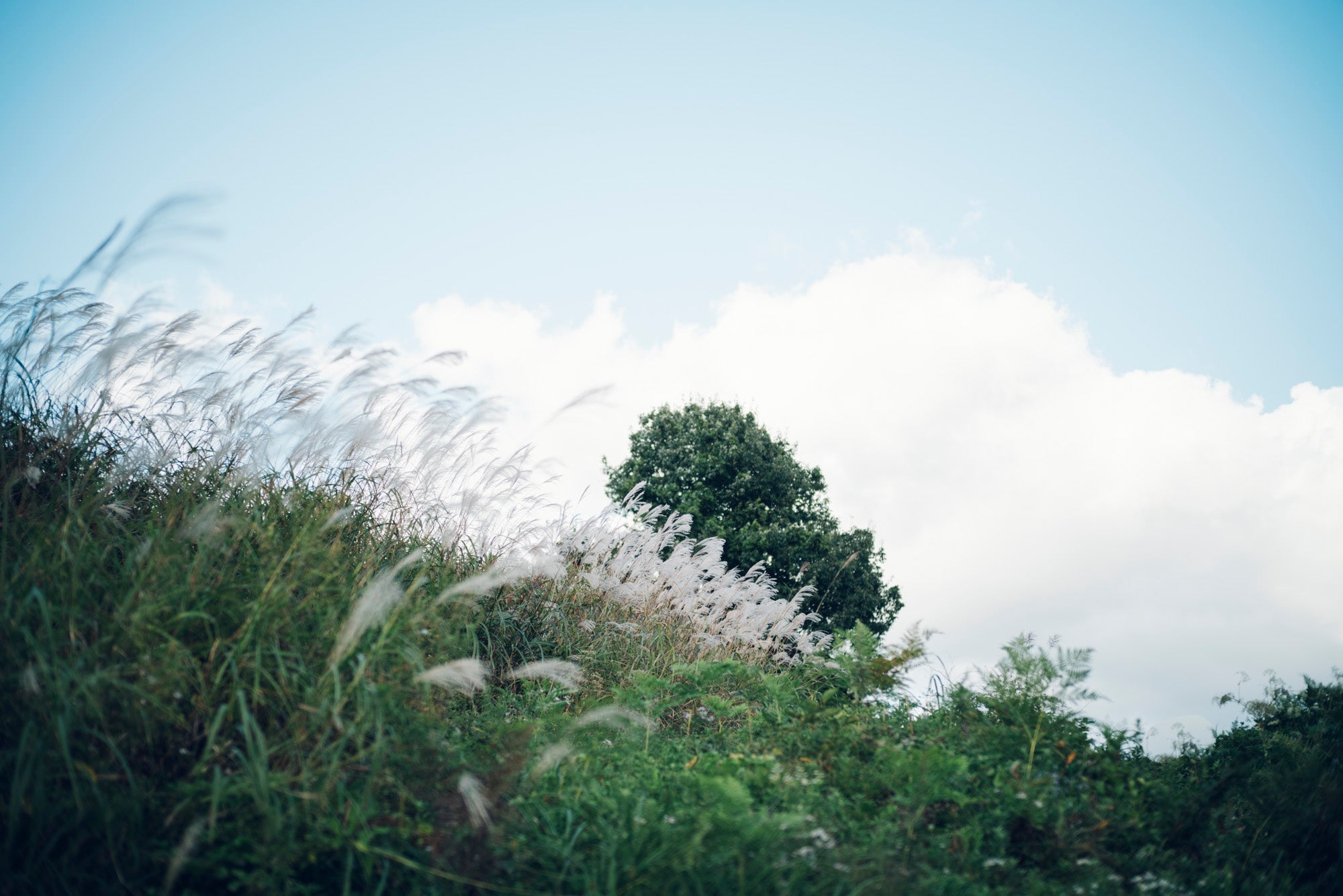The first indigo harvest
The first indigo harvest was completed in early August.
This year, the fields are only growing about one-third of their usual size, so the harvest is small.
However, the rain fell at a more than normal time and at just the right time, so the leaves seem to have turned into a thick, strong indigo color.

I've been working in the fields for six years now, and every year there are so many different things that happen and I learn so much.
There are things I can and cannot do depending on the weather, the timing of planting, the growth of the seedlings, my physical and mental state when I plant them, the maturity of the children, etc., so I just accept it as it is and say, "whatever will be, will be."
If you think too much or worry too much, you won't be able to move forward and you'll just end up regretting things, so once your indigo grows even a little, try to love and praise it and express your joy. This will make your indigo bluer and you will be able to be happier and more joyful.
There are many things that don't go well and I make a lot of mistakes, but I will try to look at what I have accomplished now in a positive way and use it to my advantage next year.

For the first cutting, we check the weather forecast carefully and decide on a day when there will be sunny days for at least two consecutive days, if possible.We then cut the grass in the morning and let it dry.

The next step is to separate the indigo leaves and stems, but since it has been raining and cloudy since then, I haven't been able to do that yet.
Due to the effects of the typhoon, the weather remains cloudy, but we hope to continue with the sorting work when the weather clears up next.
The process is as follows: the second cut is done in the same way, and then the first and second cut leaves are combined together in a pile, watered, and cut back, and this process continues for about three months.
This prepares the "sukumo" that is to be stored in the indigo vat, and the next indigo dyeing process can begin.
It's a long journey, but the fact that indigo leaves can produce such a beautiful indigo color is a joy in itself, and it's my desire to see it that keeps me working so hard in the fields.
Furthermore, there are people who help us with indigo cultivation, so we receive support from them as well.
Growing, drying, and sorting indigo is not easy (it's especially difficult for me, as I'm not originally a farmer!), so in addition to the yield, I'm very grateful to have friends who encourage me and help me out, which leads to further success.


